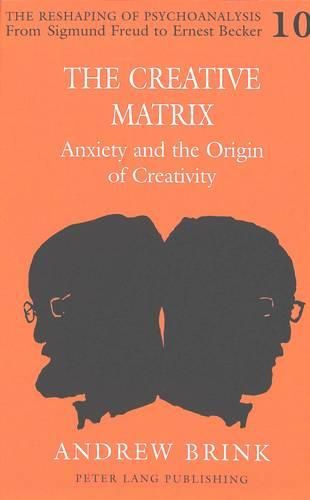Readings Newsletter
Become a Readings Member to make your shopping experience even easier.
Sign in or sign up for free!
You’re not far away from qualifying for FREE standard shipping within Australia
You’ve qualified for FREE standard shipping within Australia
The cart is loading…






The Creative Matrix shows how Freudian and Kleinian theories of creativity are giving way to an attachment model, owing to research on anxiety by John Bowlby and other psychobiologists. We are entering an era of rapproachment between psychoanalysis, neurobiology, and attachment theory. Theory of creativity must take into account the rapid advances toward an integrated view of human development and capacity for adaptation. The Creative Matrix offers a critical review of British Object Relations theories of creativity from Melanie Klein through Ronald Fairbairn, Marion Milner, D. W. Winnicott, and others. It studies these theories in the light of Bowlby’s challenge to psychoanalytic accounts of child development and personality formation. Creativity is seen as a necessary concomitant of anxious attachment in infants and children - as a natural adaptive resource in overcoming trauma and other deflections of normal development. Brief studies of poets Robert Lowell, Sylvia Plath, and Anne Sexton show how attachment theory illuminates bipolar disorder and poetic creativity.
$9.00 standard shipping within Australia
FREE standard shipping within Australia for orders over $100.00
Express & International shipping calculated at checkout
The Creative Matrix shows how Freudian and Kleinian theories of creativity are giving way to an attachment model, owing to research on anxiety by John Bowlby and other psychobiologists. We are entering an era of rapproachment between psychoanalysis, neurobiology, and attachment theory. Theory of creativity must take into account the rapid advances toward an integrated view of human development and capacity for adaptation. The Creative Matrix offers a critical review of British Object Relations theories of creativity from Melanie Klein through Ronald Fairbairn, Marion Milner, D. W. Winnicott, and others. It studies these theories in the light of Bowlby’s challenge to psychoanalytic accounts of child development and personality formation. Creativity is seen as a necessary concomitant of anxious attachment in infants and children - as a natural adaptive resource in overcoming trauma and other deflections of normal development. Brief studies of poets Robert Lowell, Sylvia Plath, and Anne Sexton show how attachment theory illuminates bipolar disorder and poetic creativity.